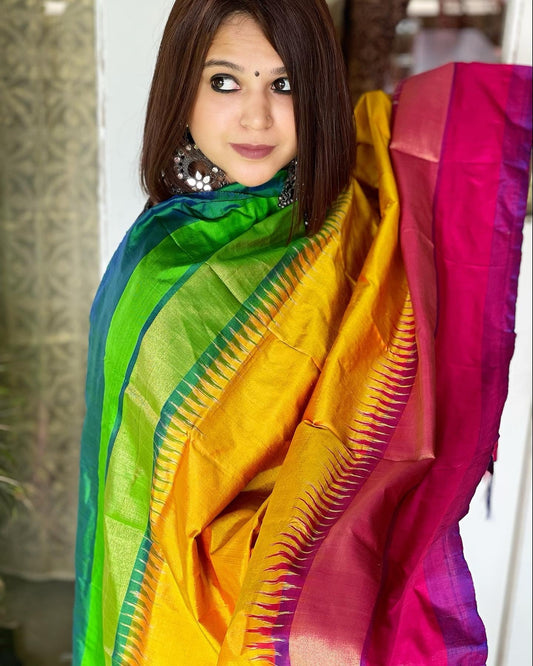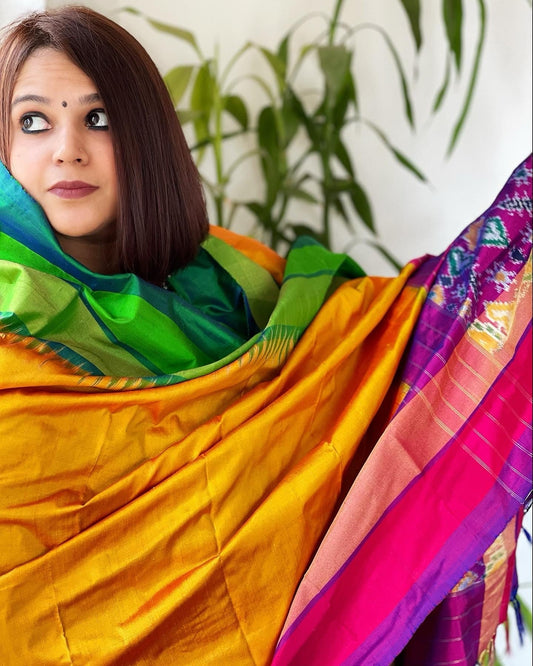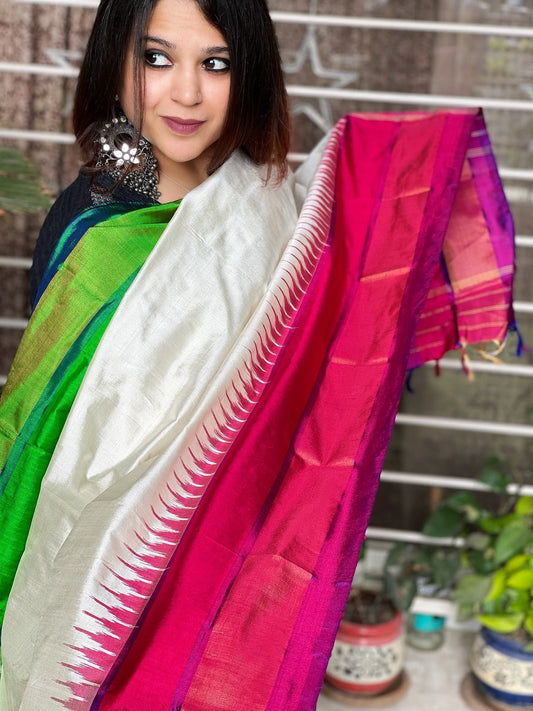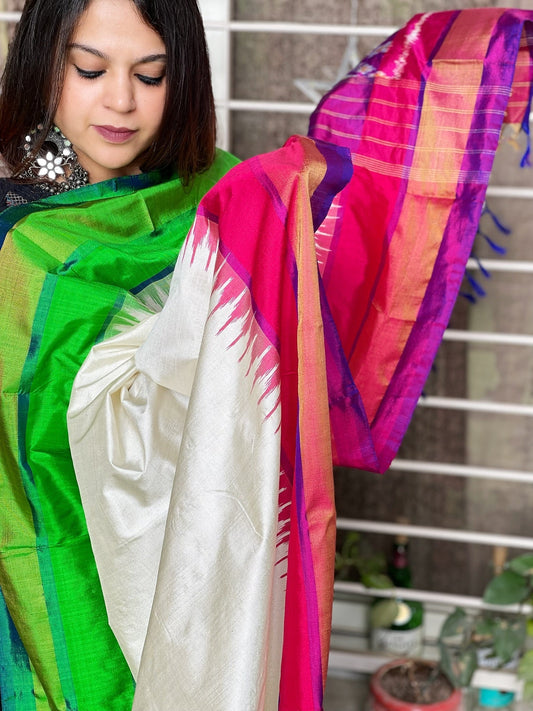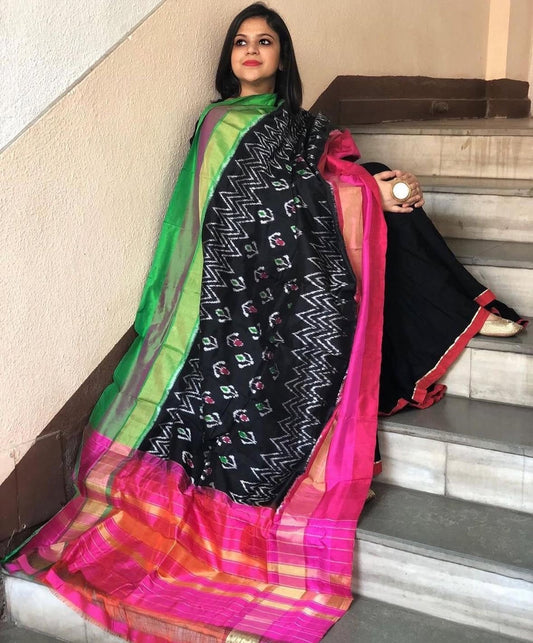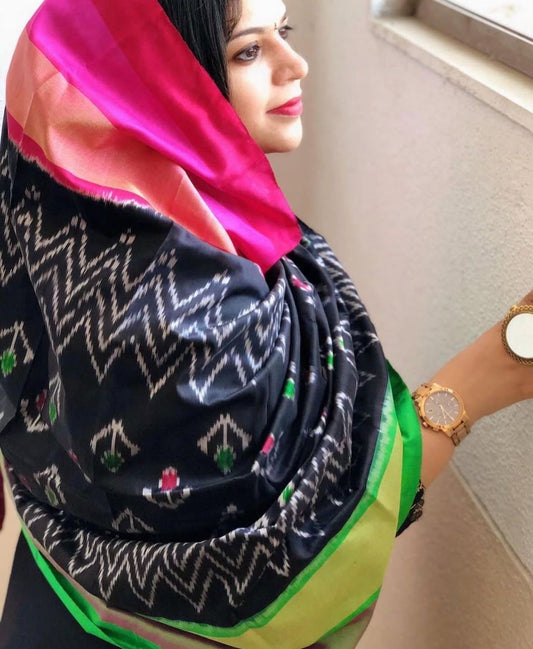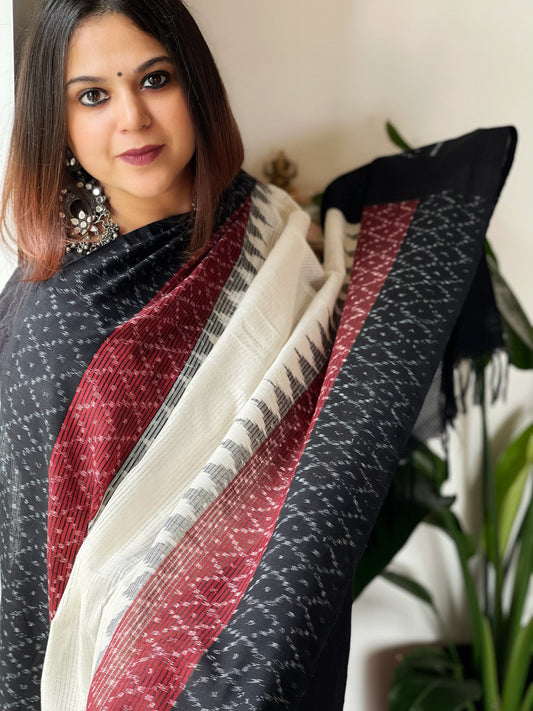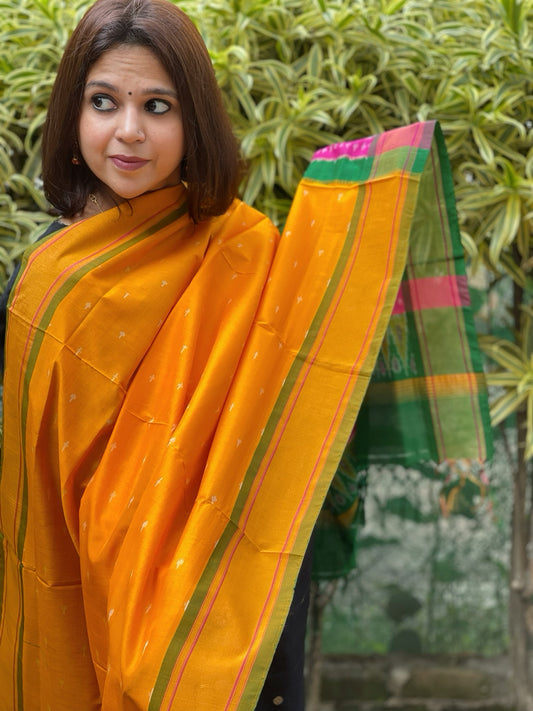Madhubani art, a fascinating and colourful artistic tradition originating from the Mithila region of Bihar, India, has been an emblem of cultural expression and religious sentiment for centuries. Characterised by intricate patterns, symbolic motifs, and vibrant hues, Madhubani paintings are not just art pieces; they are deeply ingrained in the socio-religious fabric of the community.
Through this exploration, we uncover how Madhubani art transcends the boundaries of mere aesthetic appeal, playing a pivotal role in Indian rituals and celebrations. At Masakalee, we celebrate this rich artistic heritage with an exquisite collection of Dupattas, Stoles, and Shawls, each piece narrating the timeless tales embedded within Madhubani artistry.
The Origins and Evolution of Madhubani Art
Madhubani art, also known as Mithila painting, is believed to date back to the times of the Ramayana when King Janaka commissioned artists to create paintings for the wedding of his daughter, Sita, to Lord Rama. Originating in the Mithila region of Bihar, this art form has been traditionally done by women, passed down through generations from mother to daughter. Madhubani paintings initially adorned the walls and floors of homes, but over time, they have transitioned onto cloth, paper, and canvases, broadening their accessibility and appeal.
The art incorporates geometric patterns, floral motifs, and depictions of Hindu deities and celestial bodies, each symbolising different aspects of life and spirituality. The use of natural dyes and pigments—derived from plants and minerals—further enriches the art, making it not only a feast for the eyes but also an eco-friendly endeavour.
Symbolism in Madhubani Art and Its Role in Rituals
Madhubani paintings are rich in symbolism, which plays a crucial role in their integration into Indian rituals and festivities. The motifs used are not arbitrary but are deeply symbolic and often convey specific wishes and messages. For instance, depictions of lotus flowers and fish are common and symbolise fertility and prosperity, respectively. Peacocks signify love and immortality, and intricately drawn borders are believed to ward off evil spirits.
During traditional ceremonies, such as weddings and religious festivals, Madhubani art serves as more than just decoration. It is a medium through which blessings are conveyed and stories from ancient scriptures are shared visually. The art forms a backdrop that is not only culturally rich but also spiritually significant, actively contributing to the sanctity and vibrancy of Indian celebrations.
Madhubani Art in Modern Celebrations
Today, Madhubani art continues to adorn various aspects of Indian celebrations, albeit adapting to contemporary needs and contexts. For instance, during Diwali, the festival of lights, many households create Madhubani rangolis (elaborate floor designs) as a welcome sign for prosperity. Similarly, in weddings, Madhubani designs are increasingly seen on invitations and wedding decor, offering a traditional yet unique touch to the ceremonies.
Furthermore, designers have begun incorporating Madhubani motifs into modern apparel and accessories, allowing this ancient art form to be part of everyday celebrations of culture and heritage. At Masakalee, the art form embellishes Dupattas, Stoles, and Shawls, making each piece a wearable work of art that carries the essence of Indian festivities and the meticulous skill of Madhubani artisans.
Preserving Madhubani Art Through Fashion
Incorporating Madhubani art into high-end fashion not only helps preserve this ancient technique but also bridges the gap between traditional art and modern lifestyle. By wearing clothing adorned with Madhubani paintings, individuals celebrate and disseminate an important part of Indian cultural heritage in an increasingly globalised world.
Fashion thus becomes a platform for storytelling, where each garment narrates a tale steeped in mythological and spiritual lore. For the artisans, it provides an avenue to sustain their craft economically by reaching a wider, more diversified audience. For the wearers, it offers a connection to their roots, and a chance to express their identity and personal style through garments that embody a rich cultural story.
The integration of Madhubani art in premium fashion also caters to a niche market that values uniqueness and cultural depth in their attire. By choosing a Madhubani-decorated shawl or dupatta, one not only supports the artisan communities but also carries forward a legacy of craftsmanship that transcends generations. These pieces become treasured possessions, often passed down as heirlooms, continuing the tradition of storytelling and appreciation of handcrafted art.
The Global Impact of Madhubani Art
The reach of Madhubani art has now transcended national boundaries, capturing the imagination of an international audience. Global exhibitions and collaborations have played significant roles in this expansion. Moreover, with the rise of e-commerce platforms such as Masakalee, Madhubani art is now accessible to art enthusiasts and fashionistas worldwide.
This global appreciation brings attention to the skilled workmanship of Madhubani artists and ensures that this art form is recognised as a significant cultural and artistic contribution from India to the world’s heritage. The international platform also encourages innovation within the artistic tradition, ensuring its relevance and continuity despite changing times.
By promoting Madhubani art globally, there is a dual achievement: the celebration and preservation of India’s cultural heritage and the sustenance provided to the rural communities dedicated to this craft. The international acclaim serves to inspire younger generations within these artisan communities to continue and evolve their familial craft, maintaining Madhubani painting’s vital place in the art world.
Through the vibrancy and narrative depth of Madhubani art, Indian rituals and celebrations find a resonant echo in modern contexts, ensuring that this ancient art form remains a living, evolving tradition that continues to enchant and educate across the globe.
Celebrate Tradition with Madhubani Art from Masakalee
Madhubani art not only enriches Indian rituals and celebrations but also connects us to our heritage in meaningful, vibrant ways. At Masakalee, we proudly continue this tradition by incorporating these exquisite designs into our premium collection of Dupattas, Stoles, and Shawls. Each piece is a testament to the craftsmanship and cultural stories that Madhubani art carries, making it more than just an accessory—it's a piece of heritage.
Embrace the timeless elegance and rich history of Madhubani art by exploring our exclusive collection at Masakalee. Adorn yourself in our beautifully crafted textiles for your next special occasion or gift a piece of Indian tradition to someone dear. Visit us today and become a part of the legacy that celebrates and sustains this incredible art form.



